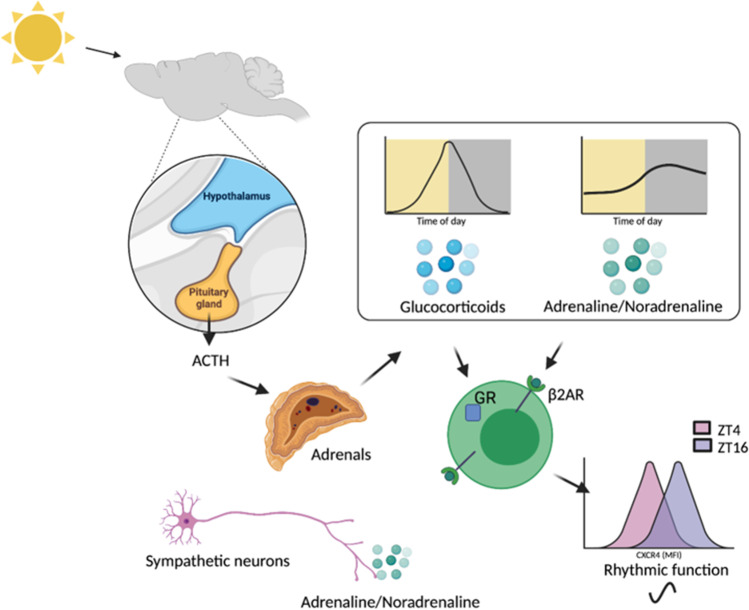Fig. 4.
Cell extrinsic rhythmic signals drive daily variation in immune cells. Glucocorticoids are produced in a rhythmic manner via action of the SCN on the hypothalamic pituitary adrenal (HPA) axis. Catecholamines are produced by the adrenal and the sympathetic nervous system and circulating levels also exhibit diurnal variation. Both glucocorticoids and catecholamines influence the function of the adaptive immune system. For example diurnal variation in glucocorticoid levels drive rhythms in CXCR4 expression on the surface of T cells and B cells. Furthermore, activation of β2AR on lymphocytes enhances the responsiveness of CXCR4; thus, daily catecholamine rhythms contribute to diurnal variation in lymphocyte function. Adrenocorticotropic hormone (ACTH); glucocorticoid receptor (GR)

